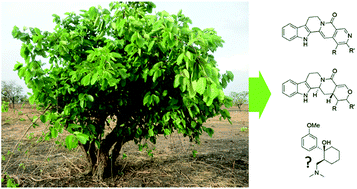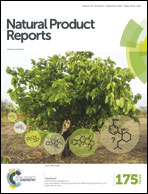Nauclea latifolia: biological activity and alkaloid phytochemistry of a West African tree
Abstract
Covering up to 2016
Nauclea latifolia (syn. Sarcocephalus latifolius, Rubiaceae), commonly called the African pincushion tree, is a plant widely used in folk medicine in different regions of Africa for treating a variety of illnesses, including malaria, epilepsy and pain. N. latifolia has not only drawn the interest of traditional healers but also of phytochemists, who have identified a range of bioactive indole alkaloids in its tissue. More recently, following up on the traditional use of extracts in pain management, a bio-guided purification from the roots of the tree led to the identification of the active ingredient as tramadol, available as a synthetic analgesic since the 1970s. The discovery of this compound as a natural phytochemical was highlighted worldwide. This review focuses on the correlation between extracted compounds and pharmacological activities, paying special attention to infectious diseases and neurologically-related disorders. A critical analysis of the data reported so far on the natural origin of tramadol and its proposed biosynthesis is also presented.


 Please wait while we load your content...
Please wait while we load your content...